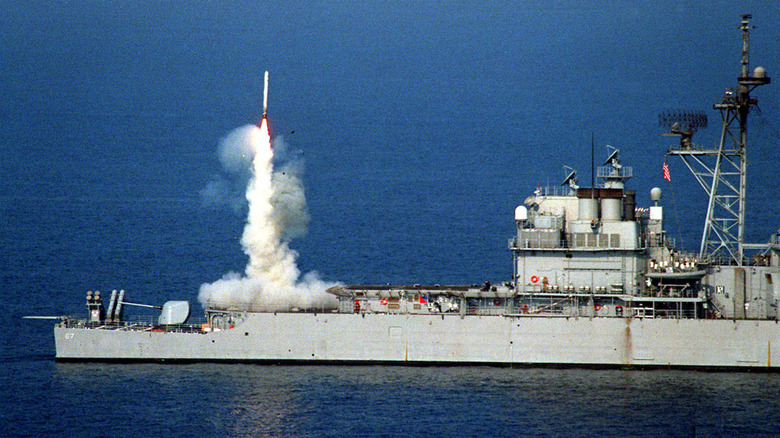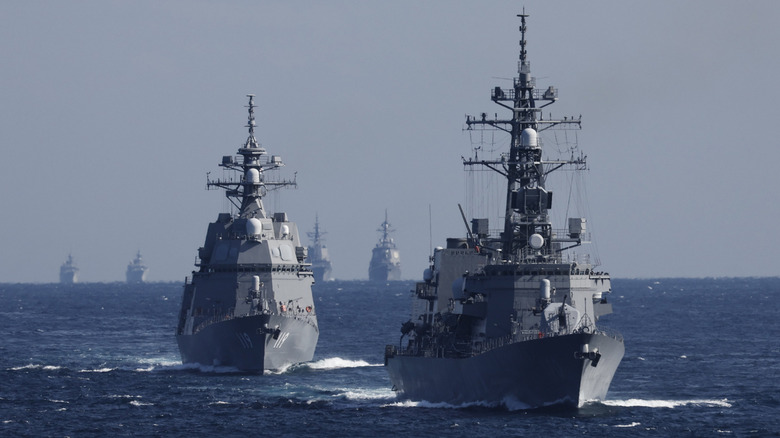Japan Is Putting American Missiles On Its Destroyers - Here's How They Work & What They're For
Countries around the world often utilize military weapons not manufactured within their own borders. The same is true of Japan, a U.S. ally, which is currently upgrading its eight Aegis destroyers with American Tomahawk cruise missiles. The JS Chokai, a Kongo-class destroyer, will be the first to get the Tomahawks, which will work with the ship's Mk-41 vertical launch system. This will allow the Chokai to fire both Block IV and Block V Tomahawks.
The Block IV uses GPS navigation and can actually change its flight path while in the air, giving Japanese ships the ability to adjust at a moment's notice. The Block V has an extended range, improved durability to survive attacks, and can target ships at sea. Together, these systems give the Japan Maritime Self-Defense Force (JMSDF) the ability to hit targets from a long range, not only from destroyers, but eventually from the country's submarines as well. In fact, all of Japan's submarines can be modified to carry Tomahawks, which gives battleships a second life. The Taigei-class attack subs will include vertical launch systems to increase missile capacity. Ground forces may also use the Tomahawks at some point in the future as well.
These upgrades give Japan a more well-rounded approach to its national defense. Not only will the Tomahawk missile system allow the JMSDF to protect the country's coast, but it can do so from a safe distance, allowing more mission flexibility and offensive capability beyond what Japan has had in recent years.
Japan is strengthening its defense network
Japan purchased its new Tomahawk missiles, one of the longest-range operational missiles in the U.S. military, in January 2024. The agreement included 400 missiles, valued at $2.35 billion. Though implementation was intended to take longer, Japanese officials put some of the Tomahawks on the fast track, targeting an installation date of 2025. The Japan Maritime Self-Defense Force (JMSDF) took the time in between to train its crews, ensuring full readiness later.
This move to strengthen Japanese forces is part of the country's new defense strategy, which was introduced in late 2022. In an effort to reexamine how the country provided for its own defense, Japan sought to work more closely with not only the U.S. but also Australia and South Korea as well. The goal was to keep a check on countries that threatened stability in the Indo-Pacific region, and the only way to successfully do that was by expanding the JMSDF's overall responsiveness. For Japan, keeping the peace meant first building a better defense.
Japan's push to keep modernizing its forces continued in October of 2025, when its Ministry of Defense approved two new missile systems. The systems will be built by Mitsubishi Heavy Industries, and will be comprised of an upgraded Type 12 surface-to-ship missile and a new cruise missile that can be launched from a submarine. The Type-12 should be ready to go by 2027, and the submarine missile could be in operation as soon as 2028.

